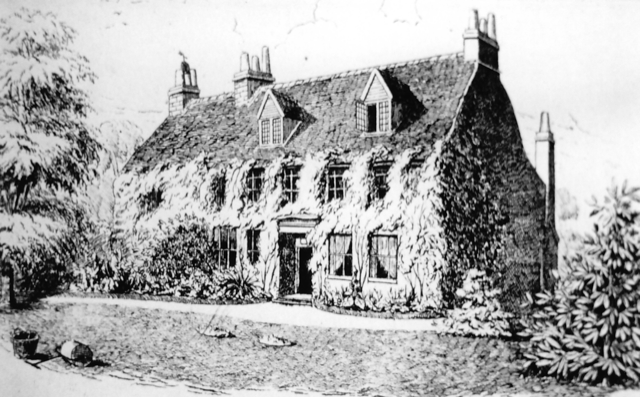Reverend Hussey's Astronomical History

One letter from the Rev. Hussey to Newman is available on the digital collections. In this letter, he discusses Tract 90.
Thomas John Hussey was the rector of Hayes, Kent where he lived with his wife Anna Maria and their daughters, Anna and Dorothy.

It was in astronomy, however, that Hussey’s main passion lay. No sooner had he been granted the living of Hayes, than in 1831 he began work to build an observatory at the rear of the property. It was described as having a 13-foot diameter copper dome, and it contained three specialist telescopes—a 6.5-inch-diameter refracting telescope, a Newtonian telescope of 7 ft. focal length, and a 9.3-inch Gregorian-Newtonian. A member of the Royal Astronomical Society, he was awarded a prize from the Berlin Academy in 1831 for his star charts.
In November 1834 he observed discrepancies, which he suggested could be a previously unknown planet in the solar system. This planet would later be identified as Neptune, and Hussey is often credited with its discovery. In 1835 he mortgaged the rectory to build a further extension at a cost of £400, leading to a diocesan inquiry. In August 1835 he was one of the first people in Britain to observe the return of Halley’s Comet. However, following a serious injury in 1838 he was forced to give up his observations and sold his telescopes to the University of Durham.
From 1843 to 1845 he published a revised edition of the Bible with a brief hermeneutic and exegetical commentary, but contemporary reviews were not favorable. The Hussey family was close neighbors of Charles Darwin, who in a letter to his sister once commented that Hussey “talked grand nonsense.”
In 1851 the Hussey family was keeping a large household with six servants, but the following year on the 26th of August 1852, Anna Maria died suddenly at the age of 48, and her husband never recovered from his grief. It was noted that his eccentricity was increasing throughout 1853, and in March 1854 he disappeared from his parish:
One Sunday in 1854, Dr Hussey began an eloquent and what promised to be a very lengthy sermon in Hayes parish church. He was still in the midst of his subject matter when he announced that he should conclude on a future occasion. Before the following Sunday he disappeared.1
On 11 March 1854, Hussey formally resigned his living and left England for Algiers. Twelve years later in 1866 he wrote to his children to advise them of his intention to move to Paris, but he was never heard from again. The Hussey family searched in vain for him in both Algiers and Paris, and in 1875 they placed advertisements in newspapers in both places, appealing for information, but the mystery of his disappearance was never solved.
In February 1893, his daughters appealed at the Probate Court to have their father officially declared dead, which was granted.2
In Hayes today a park and a crescent of houses is named Husseywell, in memory of him, which marks the site of an ancient well that he discovered there.
1 Scores and Annals of the West Kent Cricket Club, 1812–1896 (1897), 81.
2 Manchester Courier & General Advertiser, 25/2/1893
Share
Lawrence Gregory
Lawrence Gregory is the NINS senior archivist and UK agent, and a historian of nineteenth-century English Catholicism, who also enjoys cats and steam trains.
Topics
Newsletter
QUICK LINKS

